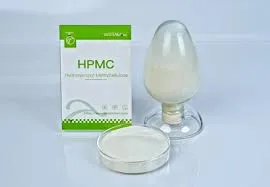
dec . 31, 2024 21:38 Back to list
Production of Methyl Hydroxyethyl Cellulose in Modern Manufacturing Facilities
The MHEC Manufacturing Landscape Innovations in Methyl Hydroxyethyl Cellulose Production
Methyl Hydroxyethyl Cellulose (MHEC) is a vital chemical compound with a wide array of applications in various industries, including construction, pharmaceuticals, food, and personal care products. As a non-ionic cellulose ether, MHEC is prized for its thickening, binding, and film-forming properties, which enhance the performance of numerous formulations. As the demand for MHEC continues to rise, the manufacturing landscape for this compound evolves to meet both market needs and environmental considerations.
Understanding MHEC
MHEC is produced by the etherification of cellulose, which is derived from natural sources like wood pulp. The resulting compound consists of methoxy and hydroxyethyl groups, which provide MHEC with unique characteristics. These properties allow MHEC to function as an effective thickener, water-retaining agent, and stabilizer. It is widely used in applications such as construction adhesives, mortar, paint, and even in the food industry as an additive for improving texture and viscosity.
The Manufacturing Process
The production of MHEC involves several key steps
1. Raw Material Selection High-purity cellulose is the primary raw material for MHEC production. The quality of the cellulose directly affects the performance characteristics of the final product.
2. Etherification The cellulose is treated with etherifying agents, typically methyl chloride and ethylene oxide, under controlled conditions. This chemical reaction transforms the cellulose into MHEC, with the desired degree of substitution influencing its properties.
3. Purification and Drying The MHEC is purified to remove any unreacted materials and by-products, followed by drying to achieve the desired moisture content. This is crucial to ensure product stability and consistency in applications.
4. Quality Control Rigorous quality control measures are implemented throughout the manufacturing process. Testing for viscosity, solubility, and chemical composition ensures that the MHEC meets industry standards and specific customer requirements.
Innovations in MHEC Manufacturing
mhec-methhyl hydroxyethyl cellulose factory

The landscape of MHEC manufacturing is experiencing significant innovation to address environmental sustainability and efficiency. Here are some trends shaping the industry
- Green Chemistry Many manufacturers are adopting green chemistry principles to reduce the use of toxic solvents and chemical reagents. This shift not only lowers environmental impact but also enhances worker safety in manufacturing environments.
- Biobased Raw Materials The focus on sustainability has prompted research into using biobased feedstocks for MHEC production. These alternatives can decrease reliance on fossil fuels and reduce the carbon footprint of the manufacturing process.
- Advanced Processing Technologies Innovations such as continuous flow processing and enzymatic synthesis are being explored to improve production efficiency and enhance product quality. These technologies can lead to reduced waste and energy consumption, ultimately resulting in lower production costs.
- Customization and Specialty Grades As industries grow more specialized, the demand for customized MHEC grades is increasing. Manufacturers are developing products with specific properties tailored for niche applications, from pharmaceuticals to high-performance construction materials.
Market Trends and Future Outlook
The global market for MHEC is projected to grow significantly in the coming years, driven by expanding applications and increasing demand in emerging economies. The construction industry, particularly, is a major consumer due to the ongoing infrastructure developments in Asia-Pacific, Europe, and North America.
Manufacturers are poised to capitalize on these trends by investing in research and development, focusing on innovative products, and emphasizing sustainable practices. Collaboration with end-users to understand their performance requirements will play a pivotal role in shaping future MHEC formulations.
Conclusion
Methyl Hydroxyethyl Cellulose remains an essential compound across multiple industries, providing significant functionality in product formulations. The evolution of its manufacturing processes, characterized by innovations in sustainability and efficiency, marks a new chapter for this versatile compound. As the global demand for MHEC continues to rise, manufacturers who prioritize innovation and environmental responsibility will be well-positioned for success in this dynamic market.
-
Versatile Hpmc Uses in Different Industries
NewsJun.19,2025
-
Redispersible Powder's Role in Enhancing Durability of Construction Products
NewsJun.19,2025
-
Hydroxyethyl Cellulose Applications Driving Green Industrial Processes
NewsJun.19,2025
-
Exploring Different Redispersible Polymer Powder
NewsJun.19,2025
-
Choosing the Right Mortar Bonding Agent
NewsJun.19,2025
-
Applications and Significance of China Hpmc in Modern Industries
NewsJun.19,2025







